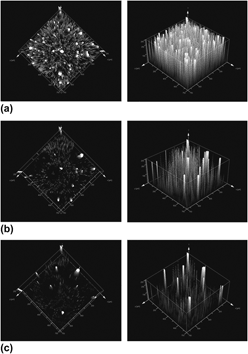Crossref Citations
This article has been cited by the following publications. This list is generated based on data provided by
Crossref.
Bag, Dibyendu S.
and
Saxena, Arvind K.
2014.
Kirk-Othmer Encyclopedia of Chemical Technology.
p.
1.
Muzzarelli, Riccardo
El Mehtedi, Mohamad
Bottegoni, Carlo
Aquili, Alberto
and
Gigante, Antonio
2015.
Genipin-Crosslinked Chitosan Gels and Scaffolds for Tissue Engineering and Regeneration of Cartilage and Bone.
Marine Drugs,
Vol. 13,
Issue. 12,
p.
7314.
Nwosu, Chinyelumndu Jennifer
Hurst, Glenn Adam
and
Novakovic, Katarina
2015.
Genipin Cross-Linked Chitosan-Polyvinylpyrrolidone Hydrogels: Influence of Composition and Postsynthesis Treatment on pH Responsive Behaviour.
Advances in Materials Science and Engineering,
Vol. 2015,
Issue. ,
p.
1.
Matcham, Simon
and
Novakovic, Katarina
2016.
Fluorescence Imaging in Genipin Crosslinked Chitosan–Poly(vinyl pyrrolidone) Hydrogels.
Polymers,
Vol. 8,
Issue. 11,
p.
385.
Bellich, Barbara
D’Agostino, Ilenia
Semeraro, Sabrina
Gamini, Amelia
and
Cesàro, Attilio
2016.
“The Good, the Bad and the Ugly” of Chitosans.
Marine Drugs,
Vol. 14,
Issue. 5,
p.
99.
Vanharova, Ludmila
Julinova, Marketa
and
Slavik, Roman
2017.
PVP Based Materials: Biodegradation in Different Environments.
Ecological Chemistry and Engineering S,
Vol. 24,
Issue. 2,
p.
299.
Marin, Daniela
Fairlie, Michael
Bunton, Patrick
Nwosu, Chinyelumndu Jennifer
Parker, Julie
Franklin, Francis
and
Novakovic, Katarina
2017.
Design and validation study of a laboratory scale chemical reactor for non-invasive imaging of macro objects in situ.
Chemical Engineering Journal,
Vol. 327,
Issue. ,
p.
889.
Isakova, Anna
and
Novakovic, Katarina
2017.
Oscillatory chemical reactions in the quest for rhythmic motion of smart materials.
European Polymer Journal,
Vol. 95,
Issue. ,
p.
430.
Novakovic, Katarina
Matcham, Simon
and
Scott, Amy
2018.
Hydrogels.
p.
1.
Isakova, Anna
Parkes, George E.
Murdoch, Billy J.
Topham, Paul D.
and
Novakovic, Katarina
2018.
Combining polymer-bound catalyst with polymeric substrate for reproducible pH oscillations in palladium-catalysed oxidative carbonylation of alkynes.
European Polymer Journal,
Vol. 109,
Issue. ,
p.
537.
Anna, Isakova
and
Katarina, Novakovic
2018.
Pulsatile release from a flat self-oscillating chitosan macrogel.
Journal of Materials Chemistry B,
Vol. 6,
Issue. 30,
p.
5003.
Isakova, Anna
Parker, Julie
Nwosu, Chinyelumndu Jennifer
Howse, Jonathan Richard
and
Novakovic, Katarina
2019.
Broadening the scope of Pd-catalyzed oscillatory carbonylation reactions: solvent, substrate, catalyst.
Reaction Kinetics, Mechanisms and Catalysis,
Vol. 127,
Issue. 1,
p.
161.
Vukajlovic, Djurdja
Parker, Julie
Bretcanu, Oana
and
Novakovic, Katarina
2019.
Chitosan based polymer/bioglass composites for tissue engineering applications.
Materials Science and Engineering: C,
Vol. 96,
Issue. ,
p.
955.
Vo, Nga T. N.
Huang, Lei
Lemos, Henrique
Mellor, Andrew
and
Novakovic, Katarina
2020.
Poly(ethylene glycol)‐interpenetrated genipin‐crosslinked chitosan hydrogels: Structure, pH responsiveness, gelation kinetics, and rheology.
Journal of Applied Polymer Science,
Vol. 137,
Issue. 41,
Mohamed, Mohamed H.
Udoetok, Inimfon A.
and
Wilson, Lee D.
2020.
Animal Biopolymer-Plant Biomass Composites: Synergism and Improved Sorption Efficiency.
Journal of Composites Science,
Vol. 4,
Issue. 1,
p.
15.
Vukajlovic, Djurdja
Bretcanu, Oana
and
Novakovic, Katarina
2021.
Fabrication and characterization of two types of bone composites made of chitosan-genipin hydrogel and Bioglass 45S5.
Open Ceramics,
Vol. 8,
Issue. ,
p.
100174.
Gupta, Preeti
and
Purwar, Roli
2023.
Properties and Applications of Superabsorbent Polymers.
p.
41.





